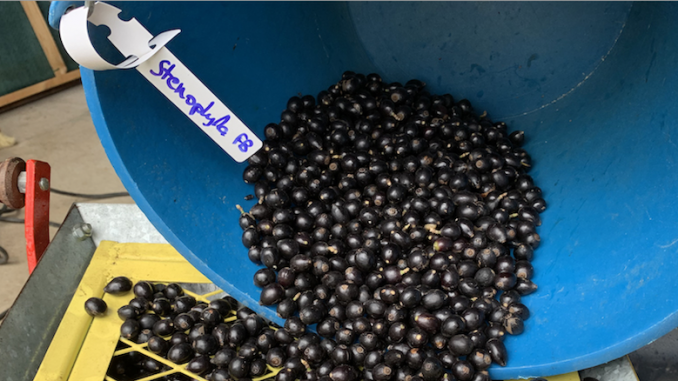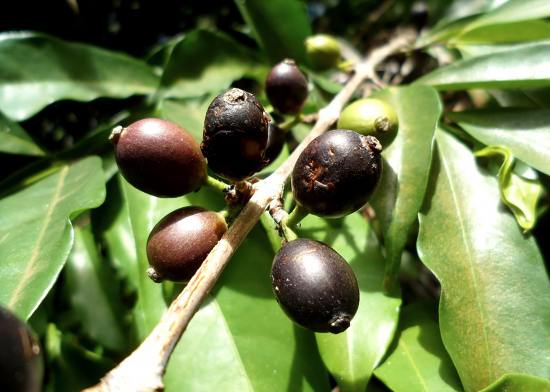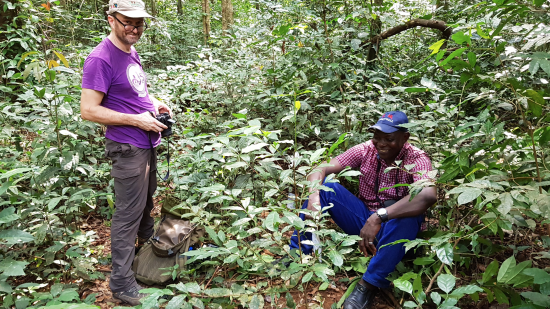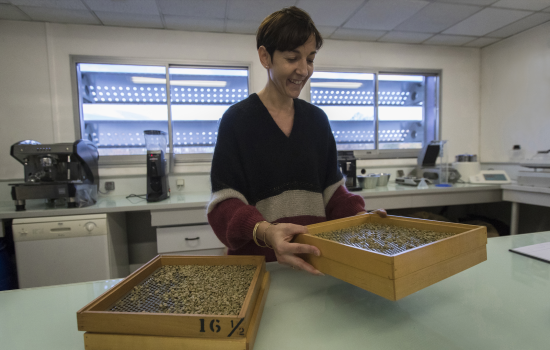
This coffee species, which was once thought to be extinct, could be the future of coffee growing.
BY SAMANTHA TAMPLIN
SPECIAL TO BARISTA MAGAZINE ONLINE
Cover photo by CRB Coffee
Many species of coffee plants flourish in temperate climates, so the ongoing rise in temperatures coupled with increased cases of diseases like coffee leaf rust have been a constant struggle in production for many coffee farms around the world.

In 2018, Coffea affinis, or stenophylla, was discovered. Stenophylla is a rare species of a disease-resistant coffee plant that can tolerate much warmer temperatures, and appeared in Upper West Africa—despite its status as seemingly extinct since 1954. Not only does the plant have the capability to impact the future of coffee based on its disease resistance, but it tastes great, too.
The flavor profile of stenophylla has been described as complex with natural sweetness, medium-high, acidity, and fruitiness. Additionally, desirable tasting notes have included peach, blackcurrant, elderflower syrup, jasmine spice, and other ingredients found in high-quality Arabica plants.
After a taste test last year hosted by Union Hand-Roasted Coffee in London, stenophylla received a high score for its Arabica-like qualities and may soon be deemed a specialty variety by the Specialty Coffee Association. Director of communications and strategy at World Coffee Research Hanna Neuschwander says that stenophylla might have a future in a niche market as a specialty item, and that it may take some time before a widespread market could develop.

Out of the 124 species of coffee (and 99 varieties commonly used in production), the stenophylla variety is one of the most flavorful, which has been a challenge for other disease-resistant plants of its kind. “The Kew researchers found that it has both high tolerance to heat and good cup quality, comparable to Arabica in an industry cupping,” Hanna says. In fact, she reports that many of the cuppers actually mistook the strain for Arabica.
Because of its versatility, stenophylla could potentially be used as a resource for biologists to develop new crops that could be produced around the globe. In a paper published by Nature Plants, Dr. Aaron Davis, the head of coffee research at Kew, says, “[Stenophylla] is a once-in-a-lifetime scientific discovery—this species could be essential for the future of high-quality coffee.”
David Behrends, managing partner and head of trading at Sucafina, agrees. He suggests that the findings pave the way for farming high-quality coffee in warmer climates and may take a larger role in the journey to ensure a climate-resilient coffee sector.
Elisa Kelly, green coffee marketing manager for Sucafina, explains that the company’s plans to buy this resilient strain if it enters the market depends mostly on their relationships with suppliers. “Certainly, we’d be interested in seeing samples and booking coffees from growers who are currently in our supply chain or from any other producer who is seeking long-term relationships,” Elisa says. She adds that while stenophylla possesses quality potential, there would be many factors to consider before Sucafina would purchase this variety if it were readily available.
“This species looks promising for the whole supply chain, from farmer to consumer,” Elisa says. “Above all, farmers are at the heart of our business, and the next major hurdle will be determining yield and viability of this coffee species in a commercial production context. It has to bring benefit for everyone in the supply chain to really have an impact. For now, we will need to wait and see.”

Though the discovery and recultivation of the stenophylla plant could mean very exciting news for the future of coffee, it is still extremely rare in the wild and is not currently produced anywhere at this time. This variety is only indigenous to Guinea, Sierra Leone, and the Ivory Coast. However, Hanna says that a few specimens have been located in Cote d’Ivoire, Uganda, and France and could be undiscovered in a few other areas.
Currently, stenophylla is a species that is extremely vulnerable to extinction, according to the IUCN Red List of Threatened Species. “It is not under commercial production today,” Hanna says. “It would take concerted efforts to develop seed stock and work to nurture adoption among farmers.”
Delphine Mieulet, a scientist at CIRAD who has tasted the species, says that, in the long run, the stenophylla plant could mean great things for the coffee industry. “For me, as a breeder, this new species is full of hope and allows us to imagine a bright future for quality coffee, despite climate change,” Delphine says. Regardless, Hanna emphasizes that any significant market for stenophylla as a high-performing variety is most likely decades away.

ABOUT THE AUTHOR
Samantha Tamplin (she/her) is a recent graduate from Eastern Kentucky University with a B.A. in journalism. She spent her time in college writing and editing for the university newspaper, the Eastern Progress, and traveling abroad with the EKU Honors Program. Currently, she works with Modbar equipment as a barista for Cincinnati’s Coffee Emporium, and plans to begin teaching art lessons this summer.

